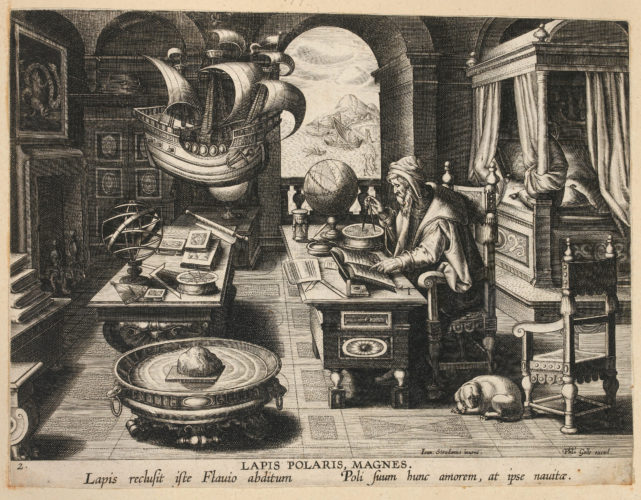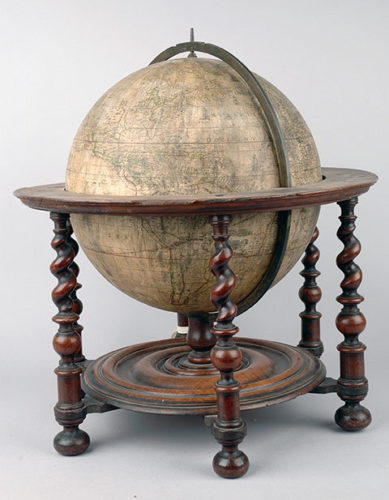This image of a scholar in his study comes from a series of depictions of wondrous recent inventions from the Renaissance, showing the creation of the compass. The room is accordingly furnished with objects that relate to navigation: a terrestrial globe, a rolled up map, a sextant and even a model of a handsome galleon in full sail. These objects are all crowded into a small private space that also includes a bed: evidence that the study could be a microcosmic space where the outside world was brought inside, and that provided the location for expansive intellectual and imaginative journeys.
Click on the globe to find out more.












